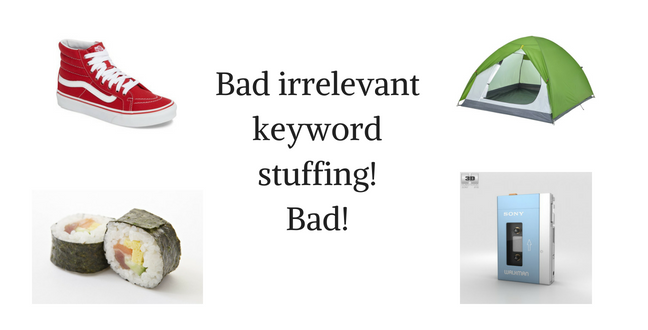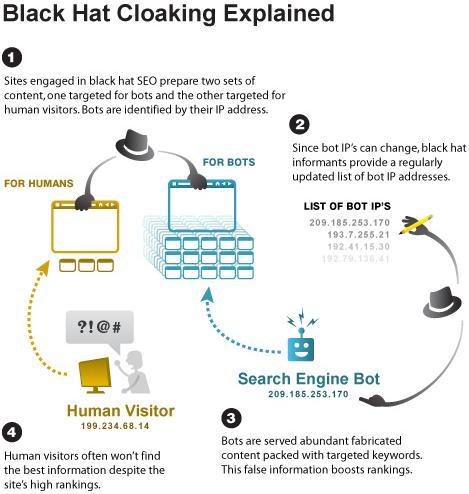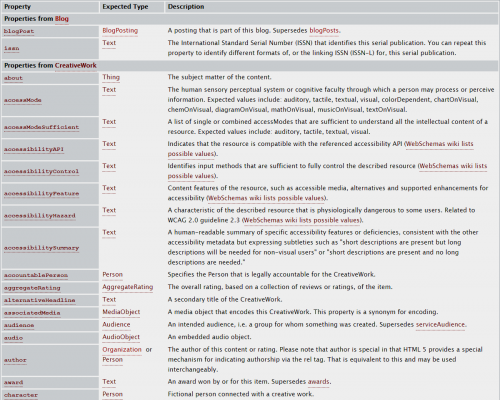Steph W. from SEOPressor


...help you check your website and tell you exactly how to rank higher?


81
score %
SEO Score

Found us from search engine?
We rank high, you can too.
SEOPressor helps you to optimize your on-page SEO for higher & improved search ranking.
By jiathong on May 15, 2018

Like how the world wide web has been rapidly growing since its creation, the same could be said on SEO.
What might be working 5 years ago might have lost half of its credibility today. With the one and almost only search engine giant Google pumping out new lines to its algorithm every day, you can only imagine that all SEOs are kept on their toes all the time.
Here I have compiled a list of SEO techniques that you may or may not have heard of before. Let’s look at them together and you’ll see whether they are in or out.

A long long time ago when Google still wasn’t the total dominator of the internet world, nor was their algorithm as complex and fine-tuned as now, the keyword was literally THE key. It was the only SEO technique. Searches are answered by a list of websites that literally matches the word used to make the query.
If you look for “red sneakers” the search engine will give you results of pages most heavily loaded with “red sneakers”. Noticing this, smart online marketers started stuffing as many keywords as they can into a web page so they will rank.
The extremities that they would go to includes making sentences like this: Red sneakers dot com is the best place to shop for a variety of red sneakers including red sneakers for boys and girls you can absolutely get your desired red sneakers on red sneakers dot com.

Well isn’t that an eyesore. What’s better (or worse, really) is they even styled the keywords in a way where they will blend into the background of the web page so it’s not visible to visitors. But still visible to the crawlers so they can be ranked for the keyword.
That way they will be ranked for whichever keyword they want, as long as they stuff as much keyword as they can into a web page.
Google, of course, noticed this unethical practice and put an end on it by updating their algorithm and giving out penalties accordingly.
But, here’s the point, keyword still weighs heavily for ranking. How else can a user get what they want if they are not utilizing keyword? A query is, in its essence, done by typing in a word or a phrase. So how can a page rank for a keyword without keyword stuffing?

Get on that keyword research action!
Keyword is the core of SEO, keyword also plays a big part in Google ranking. Now that keyword stuffing is out of the way, how can you rank?
Also known as keyword optimization, this SEO technique is the way to get ranked for a keyword while simultaneously not pissing Google off. This is the leveled up technique to utilize keywords.
Keyword research is done by conducting research (surprise!) and analyzation. Then only selecting the best keywords to target. Every niche has a specific set of keywords that get more search volume, or drives more traffic or converts the most. But how can we know what are the keywords? There’s no shortcut to this. You need to do some in-depth research.
Keyword is the essence of SEO, choosing a relevant keyword can positively make or break a business. Too general? You’ll get buried in thousand other generic websites. Too specific? You might not get enough visitors to sustain.
The most straightforward way is to search for the niche that you’re targeting and see what the high ranked pages are. Then start analyzing them, stripped them off to see which keywords they are using.
You can also use the help of some tools like Google Keyword Planner or Google Trends to get an idea on how a certain keyword will perform or how relevant it is.
Remember keyword stuffing? An even uglier version of keyword stuffing is using irrelevant keywords. This is the kind of SEO technique that you should definitely avoid.
Web pages want to rank. They also want to rank for as many keywords as possible. During the good old days when SEO was more straightforward and simple. When keyword stuffing as a SEO technique still works like a charm. The marketers figured out they can also utilize irrelevant keywords.
Combined with the technique of making keywords invisible to visitors, they started stuffing different keywords on a single page.
Now red sneakers dot com will not only rank for red sneakers. They will also rank for best camping tent, walkman for sale, sushi restaurant in LA. This list of keywords doesn’t even make sense right? So are they to the innocent users. Imagine searching for a sushi restaurant in LA but be directed to red sneakers dot com. Not even JAPANESE sneakers but RED sneakers.

You can imagine how unhappy the users were. Neither was Google impressed, so this kind of practice is heavily criticized and frowned upon. Those who dare to try now will be at the receiving end of Google’s merciless wrath.
Instead of trying to rank for multiple keywords that may or may not be related to your niche. Targeting a few selected keywords while adding in LSI keywords in the pile will work much better.
What is LSI Keyword? LSI stands for Latent Semantic Indexing.
Along the way, Google figured out that instead of focusing on keywords solely, they should also start actually understanding the content of a website. What happens is instead of a single keyword, they starting associating a topic keyword to a group of associated keywords. This gives birth to a brand new SEO technique.
Let’s look at an example. The LSI keyword for “dog” could be “dog facts”, “dog pictures”, “dog flu”, “dog for sale” etc.

LSI keywords for dog

Related searches to the word dog shows you what Google thinks are the keywords related to “dog”
So the short answer for what is LSI keyword is, whatever other keywords that Google thinks is related to your main keyword. From their point of view, if you’re talking about “dog”, it’s only natural that you might start talking about “dog for sale”.
By analyzing whether your web page is laden with LSI keywords instead of looking at how many times a keyword is used. Google can figure out (as best of their ability anyway) how relevant your web page is to a certain topic. Therefore influencing your Google rank.

No dear, it doesn’t work that way.
Now that the search engine giant notice that keyword is becoming less reliable of a reading to provide users with the relevant search results, they come up with another aspect, links.
The reasoning behind link is: a website would not link to another website voluntarily if they don’t find them relevant, informative or trustworthy. Based on this reasoning, Google started using link volume as a ranking criteria.
However, as always, we can never have nice things. Because people started abusing it, again. How? They come up with link farms, selling links, trading links. Whatever way they can think of to abuse links to get a higher rank. This is the kind of SEO technique that you should stay away from.
According to the almighty Google buying links means: “exchanging money for links, or posts that contain links; exchanging goods or services for links; or sending someone a “free” product in exchange for them writing about it and including a link.”
If you think you wouldn’t mind trading a couple hundred dollars for a link, and a little push up the SERP, think again.
A link is much more complicated than it seems because of PageRank. What this algorithm do is, each link has different values based on a couple criteria. From page authority, page content relevancy, to how many outward links they have.
So you can imagine that buying link isn’t really as efficient as hand in the money and get out with a rank 1 web page. You might also never get out of Google’s blacklist.
Now that it is certain that buying links will not only not work. You also risk getting penalized for being caught doing something that Google clearly frowned upon.
So how can you get that link juice that is clearly important for ranking? Short answer: effort and sweat and blood. (not real blood but you get the idea)
As far as Google’s reasoning goes, a link is hard to fake because people have to be willingly linking to you only if they find your content worth sharing, informative and authoritative. So try to be all those and earn links.
Invest time and effort into producing quality content that is relevant to your market and consumers. It might take some time, but people will start to notice and slowly you will get a link here and there.
Hey, Rome wasn’t built in a day neither is a rank 1 page. Instead of spending money on buying links it’s better to spend money on creating good content. At least honest work won’t get you penalized by Google and wiped out from the index.
SEO goes hand in hand with content. White hat SEO goes with good content, black hat SEO goes with lazy contents. How do they do that? By duplicating others’ hard work.
A duplicate content means a content that appears in multiple URLs in the World Wide Web.
A duplicate content is tricky for search engines because they don’t know:
Google is smart, but things like this can still confuse them. So marketers will try to plagiarize a content and hope to get ranked for the piece. Hey, isn’t that stealing? You might ask, and yes it is. Google rolled out the Panda update to counter unethical SEO technique like this. However, if you come across someone plagiarizing your stuff, you can file a complain to have it taken down.
Other than duplicated pages, pages with little value that is laden with keywords, or scrapers who scrape work of others and publishing it as their own are also considered thin content.
These tactics might have worked in the past, but the era is now long gone.

Not just any content… but quality content!
For SEO and inbound marketing, quality content is king. Pumping out quality, relevant, and creative contents consistently is one of the best SEO tactics that you can employ.
You might have noticed that a lot of e-commerce websites come with a blog page. Other than being a platform to publish informative and insightful articles, they also act as a magnet to incoming traffic volume and search ranking.
Now if you have a website selling baby products, it’s only natural for you to publish articles related to it. Be it the best time to start feeding the baby solid food. Or the how to make sure your house is childproof. Because those are the topics that interest your potential customers.
With each article published, you are building up trust and a sense of authority with your visitors. When they want to do a purchase, they are more likely to buy from you. Because in their eyes you are authoritative of your niche and they trust you on your expertise.
Remember keyword research and LSI keywords? Every time you publish an article, you are adding in keywords and LSI keywords to your website. Making it more and more relevant to your niche. Paired up with keyword research, you can consistently put out quality blog posts that are relevant and interest your potential customers. Therefore, turning them into actual customers.
To put in shortly, quality contents can: attract visitors, boost SERP ranking, build authority and trust, converts.
Tempted to start blogging on your e-commerce site yet? Like Nike said, just do it.

How cloaking works.
Want to know one of the worst SEO technique that will definitely get on Google’s bad side? The answer is cloaking.
What is cloaking? Like the word itself suggested, cloaking means covering something up to hide what it actually is.
This is a technique where they show the search engine one version of the website, but another to the visitor. They are covering themselves up and hiding their true form from the search engine crawlers.
Why would someone do that? Mostly to deceive the search engine to get a higher rank. With a higher rank, the website can attract more audience. But you can imagine the user experience will be terrible. Since they are being deceived to visit a website that does not host the content that they claim they do. Which totally defeats Google’s purpose of catering to what the users want.
Google by no means tolerates any form of cloaking. It is considered a violation of Google’s Webmaster Guidelines. You might get a boosted ranking for a few weeks, but is it worth it when your website got penalized and wiped off? Nope with a capital N.
Unlike cloaking that hides from the search engine, schema.org works the totally opposite way. You are telling the search engines exactly what the page is down to exactly what each line on the page is.
Schema.org is the brainchild of Google, Bing, Yandex, and Yahoo! Seeing all these big names in the same sentence you can tell that Schema is THE thing.
These search engines came together to help you correctly tag your web pages. That way search engines can display your pages accurately and more specifically on the SERP. The more specific your markup is, the easier it is to matches with user search intent. Therefore providing a better user experience which is what the search engines rave to cater.
Because of the complexity of a web page, it is difficult for crawlers to correctly understand each phrase according to its intend. By correctly utilizing schema you are basically telling the search engine what is what.
Whether your page is an article or news, is it about tourism or fashion, who is the author etc. There is a lot of things that can be markup to tell the search engine exactly what it is. Therefore giving the visitors a much more accurate and relevant portrayal.
Schema markup could be easily added to the HTML so you have no excuse to not utilize it. Google even has a tool to help you do just that.
Note that the whole schema is much more comprehensive and complex. The complete list of property can be viewed on the schema.org website.

A part of the list on blog properties and their schema markup tags.
Now that you have a general idea of these 10 SEO techniques, I trust you to have a good judgment on which techniques to employ. At the end of the day, remember that sticking to Google’s Webmaster Guideline will forever be the correct answer.
Related posts:
Updated: 1 January 2026


Save thousands of dollars (it’s 100x cheaper)

Zero risk of Google penalty (it’s Google-approved)

Boost your rankings (proven by case studies)
Rank High With This Link Strategy
Precise, Simplified, Fast Internal Linking.
